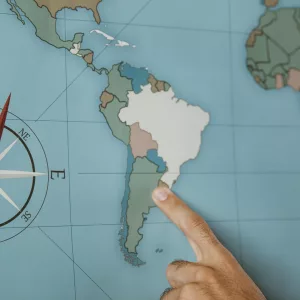As global fashion consumption continues to rise, so too does the importance of secondhand markets as a sustainable alternative. Latin America (LATAM), with its growing urban populations, rising environmental consciousness, and evolving retail ecosystems, is emerging as a key region in the future of the used clothing trade. However, entering this promising yet complex market requires strategic foresight and a firm understanding of local compliance requirements.

Why Latin America Is a Key Market for Secondhand Textiles
1. Rising Demand for Affordable Fashion
Economic inequality and inflationary pressures in many Latin American countries have heightened the demand for affordable clothing. Secondhand garments present an opportunity to meet consumer needs without sacrificing quality.
2. Growing Sustainability Awareness
From Central America to the Southern Cone, sustainability is no longer a fringe conversation. Consumers, especially younger generations, are increasingly aware of fashion’s environmental impact and are embracing circular economy solutions like upcycling and secondhand clothing.
3. Expanding Informal and Formal Retail Sectors
Secondhand clothing is often sold in vibrant informal marketplaces, but the rise of thrift stores and online resale platforms is shifting consumer preferences. Retailers are beginning to modernize and digitize the secondhand space.
Market Entry Considerations
1. Legal Importation: Countries That Allow It
Navigating the regulatory landscape is key. As of 2025, the following Latin American countries legally allow the importation of secondhand clothing:
- Chile: The largest importer in the region. There are no specific restrictions on secondhand clothing, and most shipments enter through the Iquique Free Trade Zone. Fumigation certification is typically required.
- Guatemala: Open and active market, importing approximately 130,000 tons of used clothing in 2021.
- Honduras: A robust secondhand clothing market with around 66,000 tons imported in 2021.
- Nicaragua: A developing secondhand industry with 52,500 tons imported in 2021.
- El Salvador: Another key importer in Central America with approximately 35,000 tons brought in during 2021.
These countries offer strong opportunities for exporters and are actively involved in the secondhand clothing trade. Businesses interested in market entry should still conduct country-specific due diligence on documentation, labeling, and fumigation requirements.
2. Local Partnerships Are Key
Success often hinges on finding the right local partners—importers, distributors, or logistics firms—who understand regional nuances, such as customs procedures, consumer preferences, and market dynamics.
3. Tailoring Product Mix to Local Needs
Tropical mixes, winter wear, or branded vintage? Knowing what sells is critical. In warmer climates like Central America and the Caribbean, lightweight tropical mixes are preferred, while southern countries like Chile may accept a broader seasonal variety.
Compliance Strategies
1. Transparency & Documentation
Robust shipping documentation (invoices, packing lists, certificates of origin, and fumigation certificates) is essential for smooth customs clearance. Some regions require additional documentation related to health and safety standards.
2. Quality Assurance
To counter negative perceptions of used clothing as “low quality,” many importers are demanding consistent, well-sorted products. Bales should be clearly labeled and packed according to the customer’s specifications—credential clothing, tropical mix, or premium vintage.
3. Adapting to Environmental & Social Standards
Countries are increasingly implementing extended producer responsibility (EPR) policies and green import criteria. Being able to demonstrate your company’s commitment to sustainability—whether through carbon reporting or textile diversion metrics—can become a competitive edge.
Opportunities for Growth
- Digital Resale Platforms: LATAM’s smartphone penetration is enabling mobile-first resale apps to flourish.
- Local Upcycling Initiatives: There’s growing interest in transforming secondhand textiles into new garments, accessories, or home goods.
- Brand Collaborations: Opportunities exist for secondhand wholesalers to partner with Latin American fashion brands looking to integrate circular models.
Conclusion
The future of the used clothing trade in Latin America is promising—but not without challenges. With a strategic approach focused on market intelligence, legal compliance, and sustainability, secondhand clothing suppliers can unlock new revenue streams while supporting circular economy growth in one of the world’s most dynamic regions.
Are you a supplier or brand looking to enter Latin America’s secondhand clothing market? Bank & Vogue can help. We specialize in customized product mixes, quality control, and international logistics. Contact us to explore your entry strategy today.







